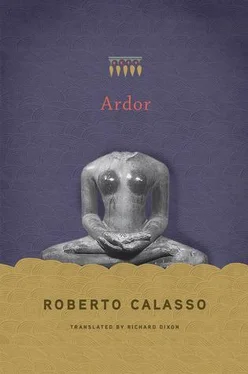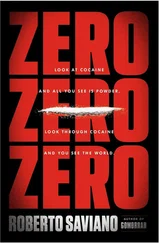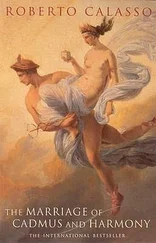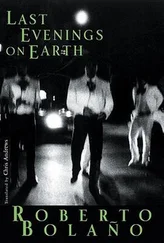* * *
Jesus’s gesture of breaking bread during the Last Supper and speaking the words “Hoc est corpus meum” is a dazzling ray of light that opens up two horizons, behind and ahead. Behind Jesus himself we can look back to the beginning, to the situation when the officiant and the oblation are the same ( “ipse offerens, ipse et oblatio,” in the words of Augustine). A situation to which every sacrifice alludes, but which is reserved for the deity. Ahead of Jesus is a view that goes beyond the observer, toward that which has still to take place. In fact, the sacrifice announced by the fractio panis , which prefigures the dislocation and fracturing of his joints in the crucifixion, is not a sacrifice but a death sentence confirmed by the voice of the people. Therefore it is something belonging not to the religious domain but to the secular domain and, ultimately, to the domain of public opinion. Two extremes are therefore set: on one side the sacrifice that no man can celebrate, except by committing suicide; on the other the abandonment of sacrifice, substituted by a judicial sentence and by the majority choice of a community. The Eucharistic innovation suggests the opening up of two conflicting and incompatible perspectives. The sacramental bread will assume the name of hostia , which is the technical term describing the oblation in sacrifices of atonement. But Jesus’s trial and the carrying out of his sentence will follow a procedure imposed by the Roman state, alien to the religion of Jesus’s own people. There remained only one point of contact with the sacrifice: the killing would take place “extra castra,” outside the city.
* * *
Reading the Śatapatha Brāhmaṇa is like making a journey to the radiant heart of India. But the idea — later abandoned — of a commentary certainly did not aim to do that. On the contrary, it was an attempt to move away from any specific coordinates of time and place to return to observing certain simple gestures, of which we may be aware or unaware, but are always with us and without which we could not exist: the actions of breathing, swallowing, copulating, cutting, killing, evacuating, speaking, burning, pouring, thinking, dreaming, watching — and more. Cultures have practiced each of these actions, indeed they have become identified with the methods and techniques used to develop them. But, once the anthropologists had seemingly concluded the work of listing all of these configurations, a sense of indifference and atony took over. All of these cultures marched off, in formation, like lead soldiers each dressed in different uniforms. Marching off not to war but to a World Exposition — one respectful of all diversity and futile in its foundation, which was simply this: all diversity is to be respected, because, within a particular culture, it serves to maintain social balance. But, since we are concerned here with techniques, each placed on the same level, how do we work out which will be the right technique? And what could it mean for a technique to be right ? Every technique, by its nature, recognizes only one criterion, that of effectiveness. But effective in relation to what? The only acceptable technique is that which relates to material power and conquest. But what if we are aiming for an effectiveness of another kind? Then, perhaps, the Brāhmaṇas might be helpful. Because they deal only with irreducible gestures, eliminating any other concern. And because they introduce techniques and criteria of effectiveness that very often seem to be ironic and impatient glosses on what, three thousand years later, has established itself as common sense. Such an abrupt and disorientating shift of perspective might well be beneficial in itself, like a sudden change of air.
* * *
The gods appear like foam, ready to be blown away. Their waves persist. “A divine vitality, infinitely agile and deceptive,” wrote Céline in a letter of 1934, thinking of the America that was around him. He was also referring to the world.
* * *
In the end, we might well ask: what can be the relevance of all we read in the Veda, seeing that it has nothing to do with modern life in a secular society? None, we could say. But then quantum mechanics has no correspondence whatsoever with modern life, whereas Newtonian physics has ended up becoming the very model of common sense. And should we then perhaps think of quantum mechanics as unimportant? The Veda might be more comparable to a microphysics of the mind than to other categories (archaic or magic or primitive thought or other descriptions of that kind, now inert). The impressive vividness of those writings, even though nothing of them is borne out by common experience, might indicate that something of that-which-is continues to appear as the Vedic seers saw it. Or at least it resembles nothing so much as what the ṛṣis have passed down to us.
* * *
In the present world there are so many brands that strive to become myths. But the expression “myths of today” is a lexical abuse. A myth is one fork in one branch of a vast tree. To understand it we need to have a view of the whole tree and the great number of other forks that are hidden within it. That tree has not existed for a long time — well-honed axes have chopped it down. Modern stories that most resemble myths (Don Giovanni, Faust) therefore have no trunk on which to attach themselves. They are stories that are orphaned, self-sufficient, but have none of that sap which flows inside a tree of myths and whose composition is constant in every part of it — a sap that contains a certain coefficient of truth. And it is that very coefficient of truth that enables us to understand and make use of stories from the most distant times and places. What these stories offer is something that, once found, remains unscathed by any further investigation or discovery. Anyone who has entered the flow of mythical stories can let himself be swept anywhere, knowing that one day the very same current will bring him back to the land from where he first set off. And from where he may, at any moment, set off once again.
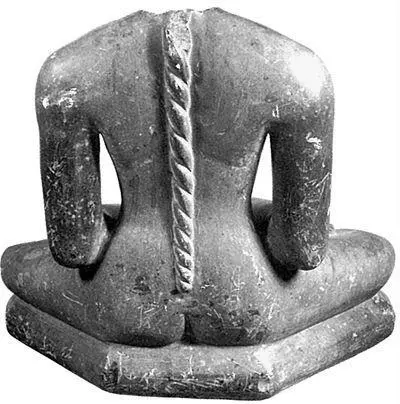
I. REMOTE BEINGS
4, 34
Ṛgveda , 10.68.12.
4, 35
Viṣṇu Purāṇa , 4.6.9.
5, 2
Ibid., 4.6.32.
5, 10
Ṛgveda , 10.109.4.
6, 23
Śatapatha Brāhmaṇa , 10.5.2.6.
7, 7
Ibid., 3.1.1.2.
7, 36
Joseph Conrad, Chance (1913), Oxford University Press, Oxford, 1988, p. 4.
8, 14
Śatapatha Brāhmaṇa , 4.2.5.10.
8, 36
Ibid., 1.2.4.4.
9, 33
Louis Renou, “L’Ambiguité du vocabulaire du Ṛgveda” (1939), in Choix d’études indiennes , edited by N. Balbir and G. J. Pinault, Presses de l’École Française d’Extrême-Orient, Paris, 1997, vol. I, p. 113.
9, 37
Louis Renou, Langue et religion dans le Ṛgveda (1949), in Choix d’études indiennes , cit., vol. I, p. 11.
11, 6
Śatapatha Brāhmaṇa , 13.3.3.6.
11, 10
Ibid., 13.2.10.1.
12, 2
Ibid., 3.6.2.26.
13, 2
Louis Renou, Religions of Ancient India (1953), second edition, The Athlone Press, University of London, 1972, p. 1.
13, 33
Frits Staal, Rules Without Meaning , Peter Lang, New York, 1989, p. 65.
16, 21
Michael Witzel, Das Alte Indien , Beck, München, 2003, pp. 28–29.
16, 26
Ṛgveda , 3.26.5.
16, 30
Ibid., 1.88.1.
16, 31
Ibid., 5.59.2.
16, 33
Ibid., 5.60.3.
Читать дальше
